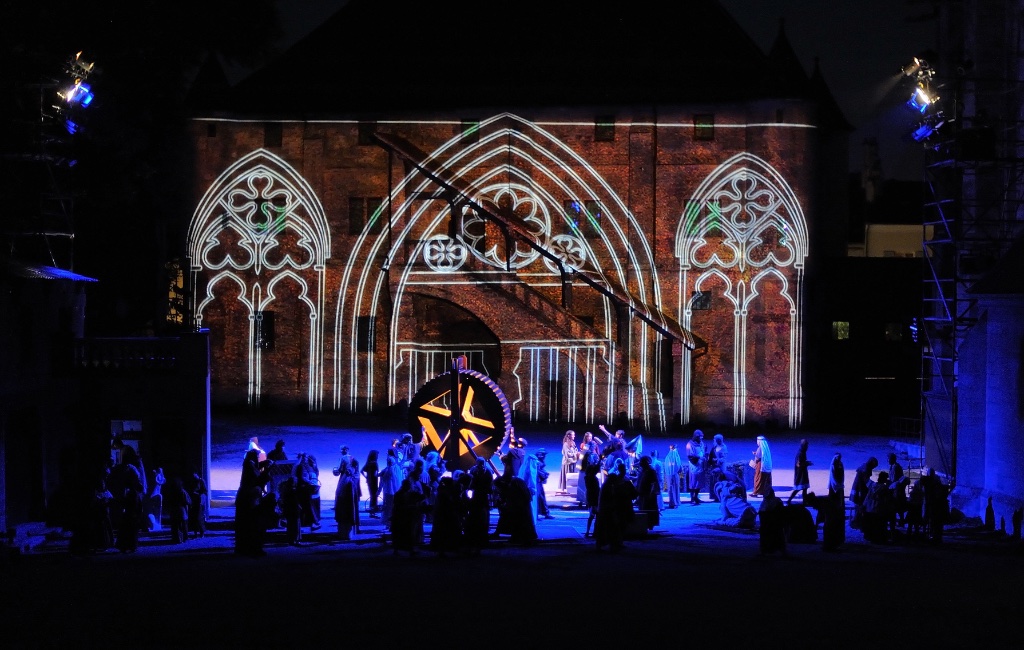
Last week, I was introduced to an element of French culture that had completely escaped me until now: a summer historical pageant. This one takes place in Meaux, a small city northeast of Paris, but I have since discovered that the same phenomenon occurs in towns all over France and that there is even an association, the Fédération Française des Fêtes et Spectacles Historiques, grouping together the many places that put on such productions.
And what a production it is! Called “Folles Époques” (‘Wild Times”), this 75-minute romp through 2,000 years of history is put on by 500 volunteers, around 350 of whom are performers, each playing several roles in different costumes, of which there are 2,500.
It sounds like a logistical nightmare, and it could be, but the organization of the show, which is celebrating its 40th year, is impressive. Today, for example, bar codes on badges help the organizers keep track of the whereabouts of all the performers and the costumes.
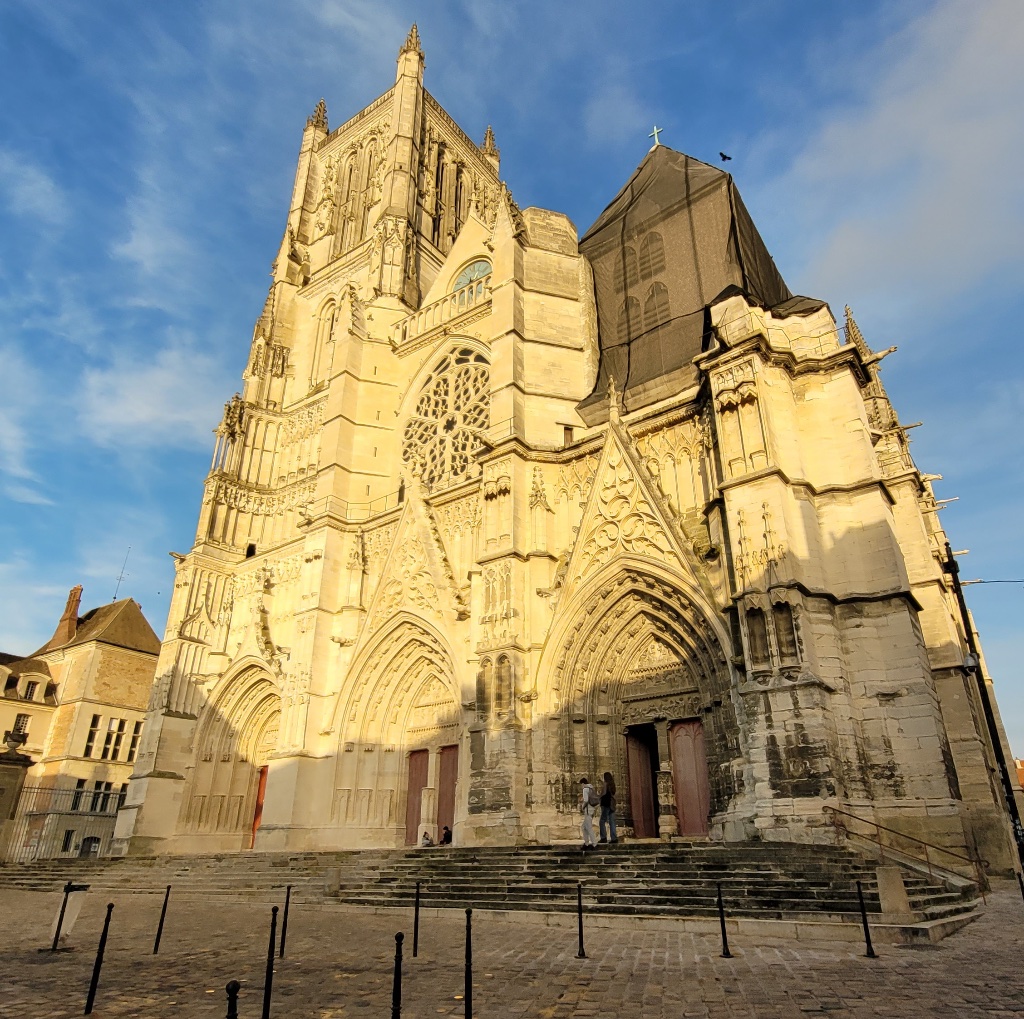
I was invited to a dress rehearsal last week and got to go “backstage,” which in this case means the Saint-Étienne Cathedral and other buildings in the city’s Episcopal enclosure.
Each performer has to change costume several times and is in charge of caring for his or her own costumes, which could be up to seven per person. The players have to run back and forth from the “stage” to their dressing area in the dark, without the aid of historically incorrect eyeglasses, which they are asked to remove, along with their jewelry, because authenticity counts here, right down to the shoes. They sometimes have only a few minutes to transform from, say, a medieval peasant into a soldier or a Roaring Twenties’ Charleston dancer.
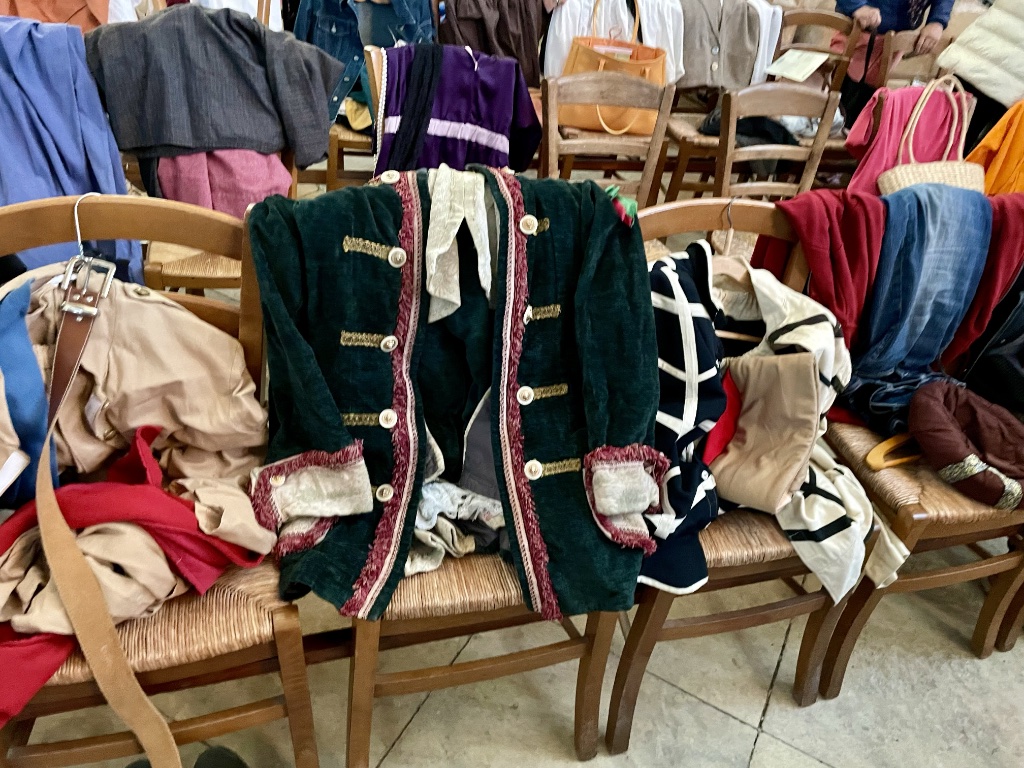
Before the show, the interior of the august Gothic cathedral, built between the 12th and 16th centuries, resembled a flea market, with colorful costumes draped over the chairs and performers in varying states of undress organizing their outfits to facilitate quick changes.
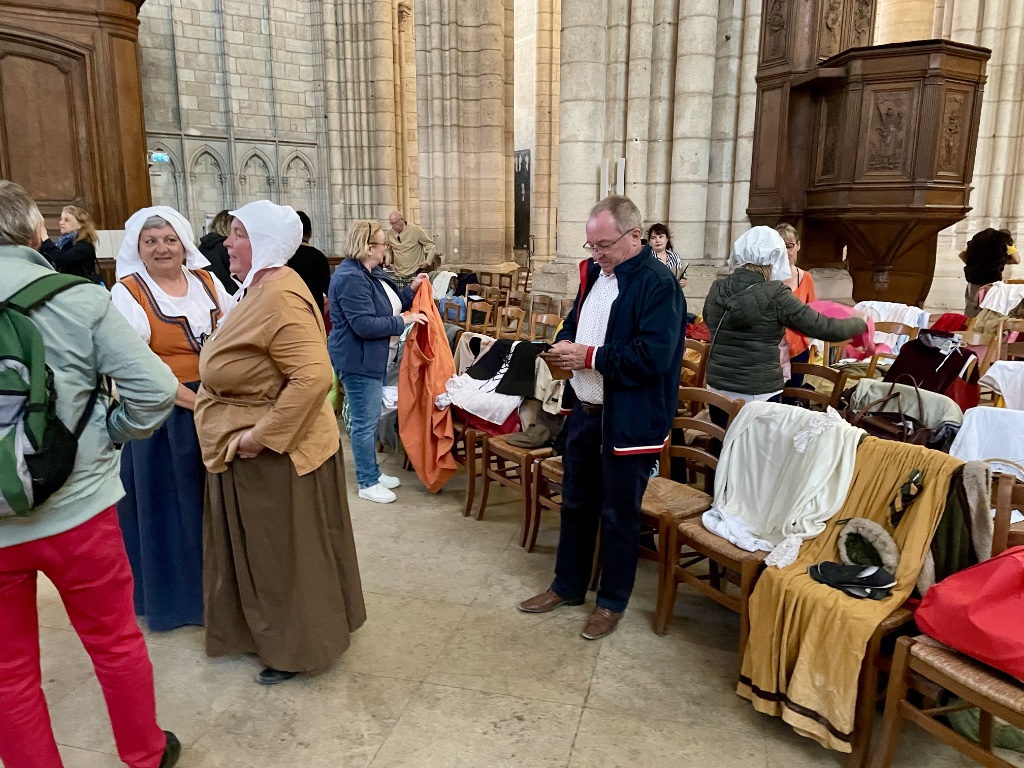
The players are all locals who participate in the show for the sheer fun of it and are not required to have any special talents (although some proved to be good actors, singers and dancers). The show starts at nightfall in the courtyard between the cathedral and the chapter house, where bleachers seating 900 spectators are set up. This massive production includes lots of singing and dancing, fireworks, live horses, a vintage Citroën, projections on the 17th-century chapter house, and fancy lighting effects.
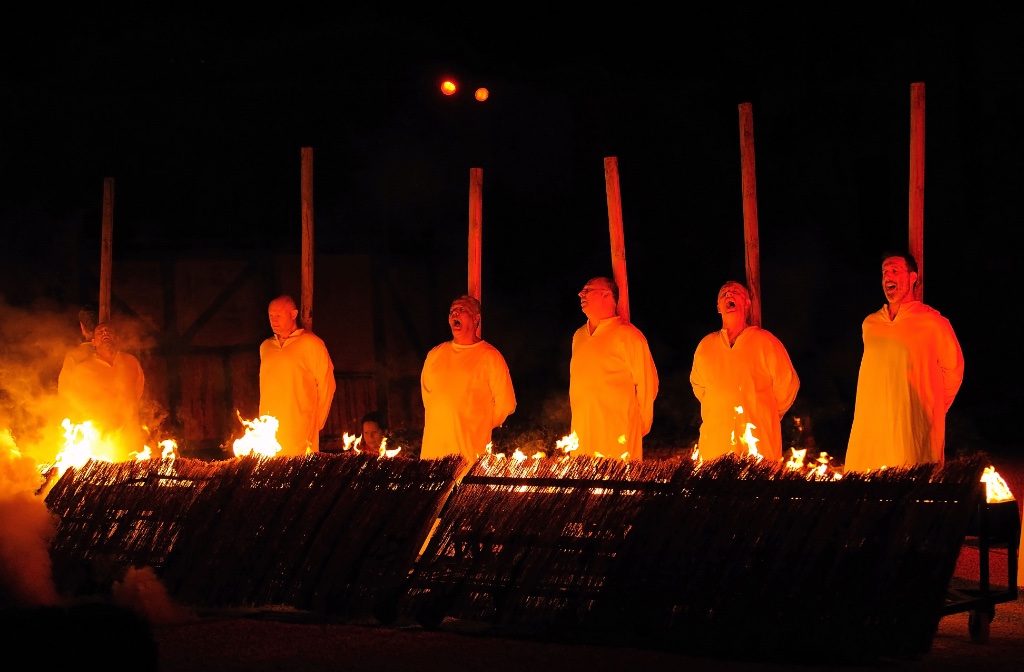
The show has morphed over the years, with some segments taken out and others added. While the result was perhaps a bit fragmented, it moved along at a fast clip, covering many high points in the history of both France and the city itself, including its founding by a Gaulish tribe, the Meldi (the inhabitants are still called “Meldois”); the agricultural fairs the city was famous for as early as the fourth century; the siege of Meaux by the English in the early 15th century; the massacre of Protestants on St. Bartholomew’s Day in 1572; Henri IV’s visit to his mistress Gabrielle d’Estrées at the end of the 16th century; and the night Louis XVI and Marie Antoinette slept in the Bishop’s Palace when they were being taken back to Paris after they attempted to escape the revolutionaries in Paris and were arrested in the town of Varennes.
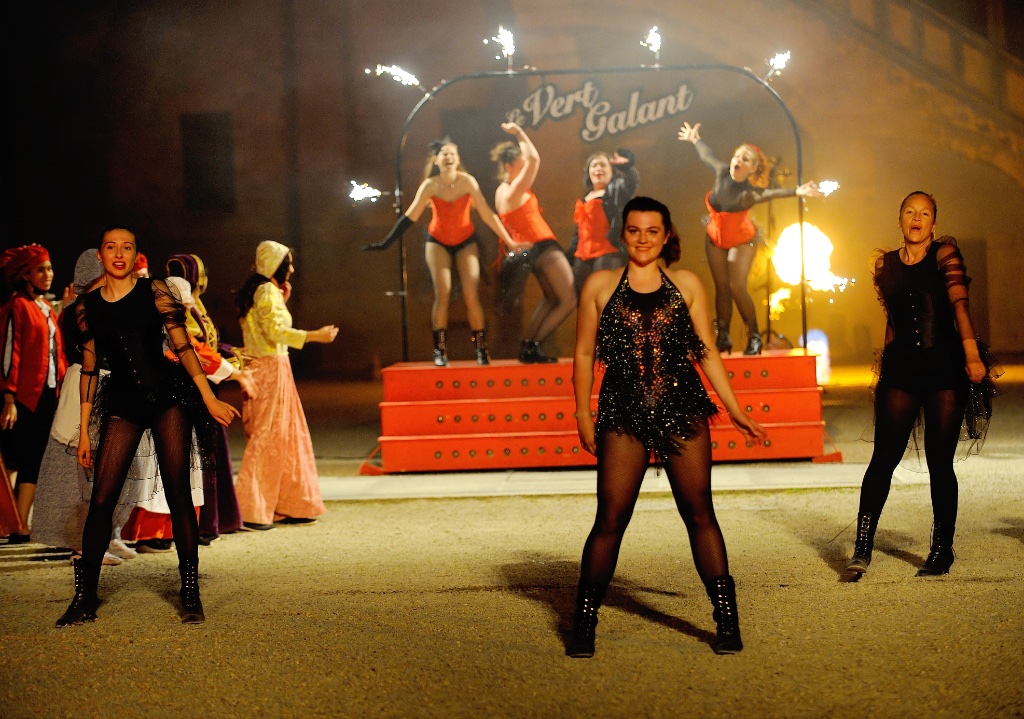
Pierre Corbel, the director of “Folles Epoques,” had promised some contemporary touches in this production, and he kept his word. The first one was rather a shock: Spanish Sevillana dancers in modern costumes suddenly turned up at the end of the Hundred Years’ War. We never did figure out the connection there, but it was good fun when some statuesque dancers in sexy, spangly outfits came on to dance seductively to “Lady Marmalade (Voulez Vous Coucher Avec Moi Ce Soir?)” just after Henri IV’s visit to his lover. After the Revolution, the celebratory “Feeling Good” was sung: “It’s a new dawn. It’s a new day. It’s a new life for me…” I sensed the influence of Sophia Coppola’s Marie Antoinette and the TV series Bridgerton in these anachronisms.
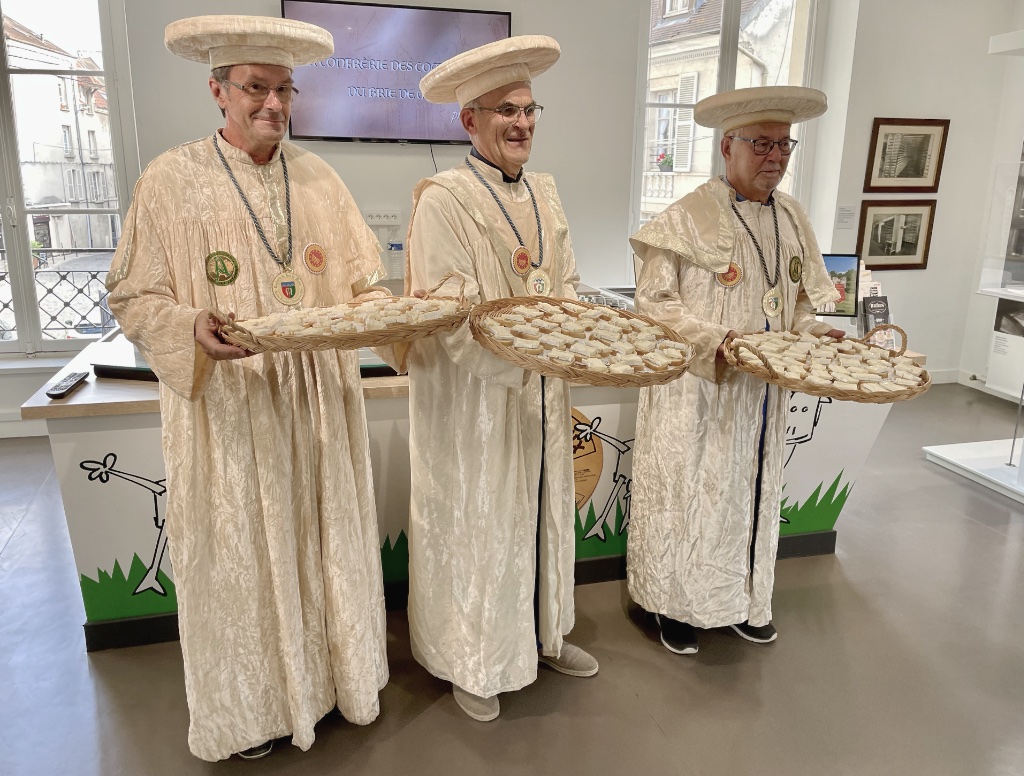
Aside from seeing “Folles Epoques,” there is much to do in this beautiful part of France, the source of Brie de Meaux, the world-famous raw-milk soft cheese (look for the AOP label to be sure you are getting the real thing; if it’s pasteurized, it’s not Brie de Meaux) and Moutarde de Meaux, the town’s excellent mustard. In the Tourism Office facing the cathedral, you can learn how Brie is made (if you’re lucky, you will meet members of the Brie de Meaux Brotherhood, in their white velvet robes and Brie-shaped hats) and sign up for all kinds of activities, from a tour of a cheese-making facility to visits to the impressive Musée de la Grande Guerre just outside of town.

The partially walled Episcopal City, which encompasses the cathedral, the chapter house and the bishop’s palace (home of the Musée Bossuet) with its formal French garden shaped like a bishop’s miter, is a must-visit. Two of the more famous bishops were the reformer Guillaume Briçonnet (1470-1534), who offended church authorities by daring to publish religious texts in French rather than Latin (how Protestant of him!) and had to get out of town fast, and Jacques-Bénigne Bossuet (“The Eagle of Meaux”), a great orator whose sermons are still studied and appreciated.
In short, Meaux is a great place to visit, and “Folles Époques” is a kitschy blast that will immerse you in a certain type of French culture if you can make it there for one of the eight performances in June and July (see the righthand column of this page). Since they start when night falls, at 10:45pm, you’ll have plenty of time to visit the city beforehand.
Favorite